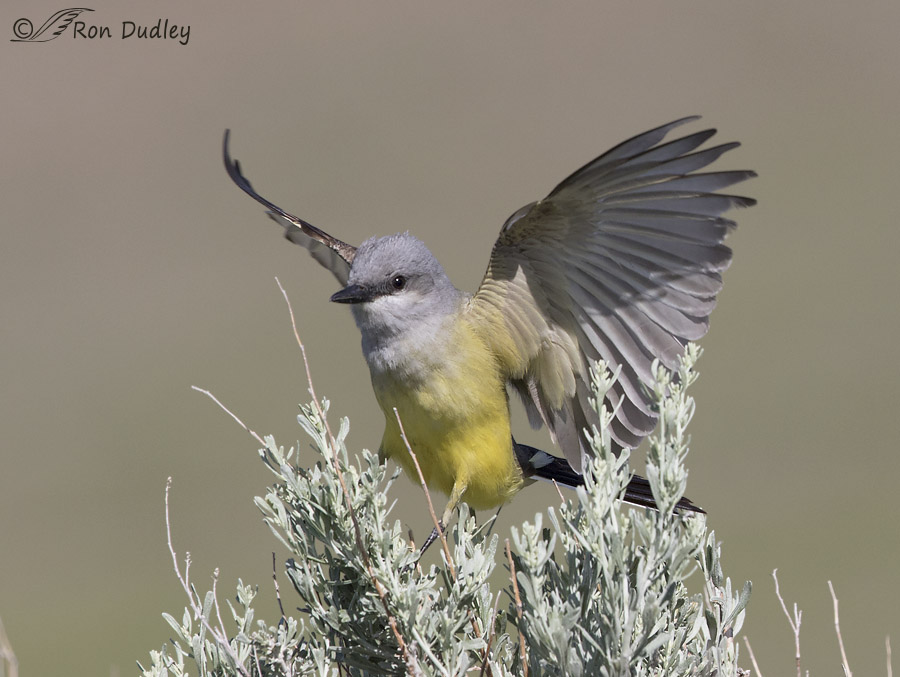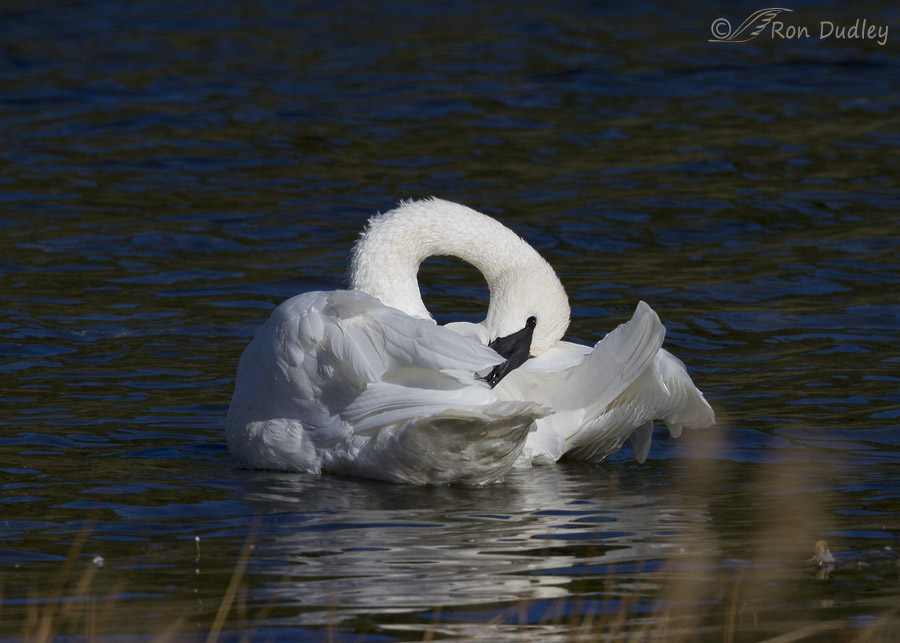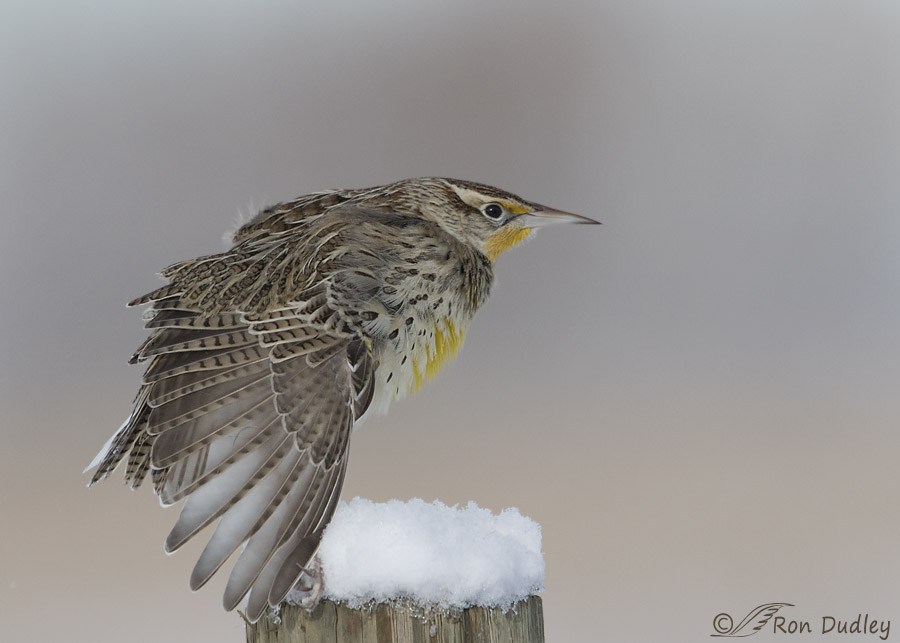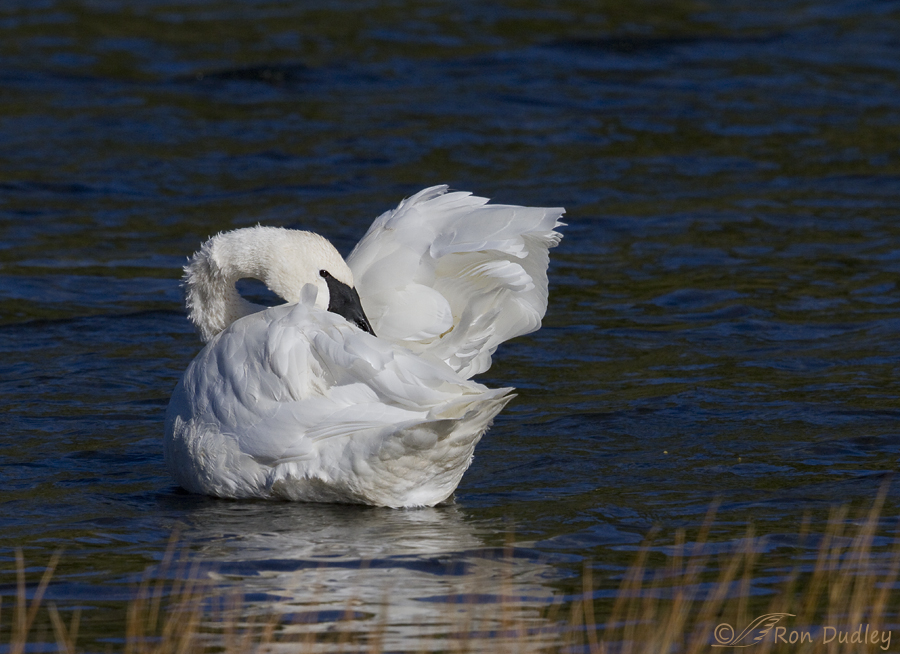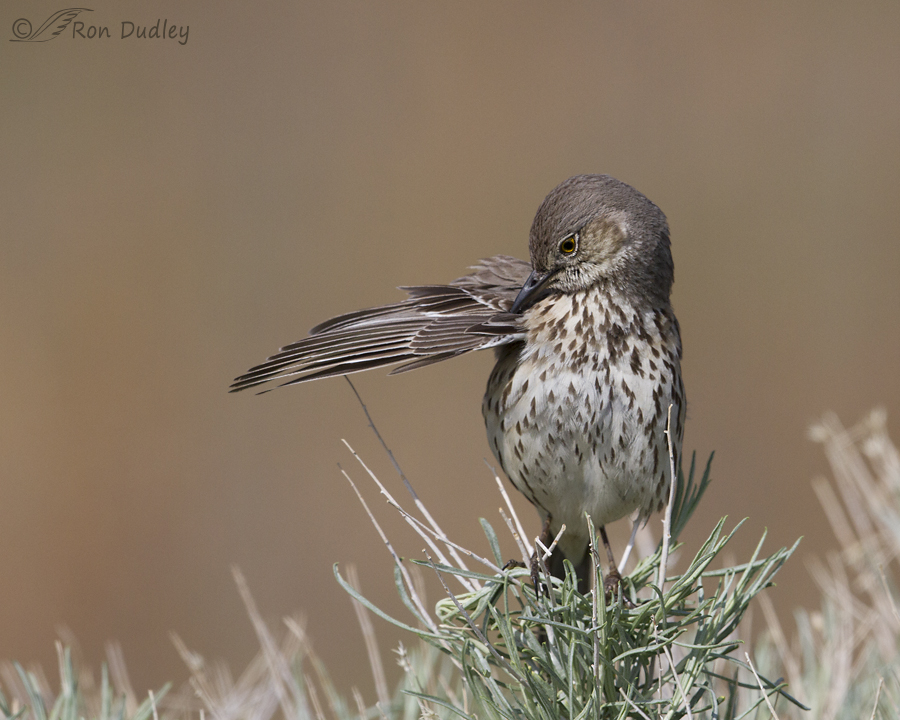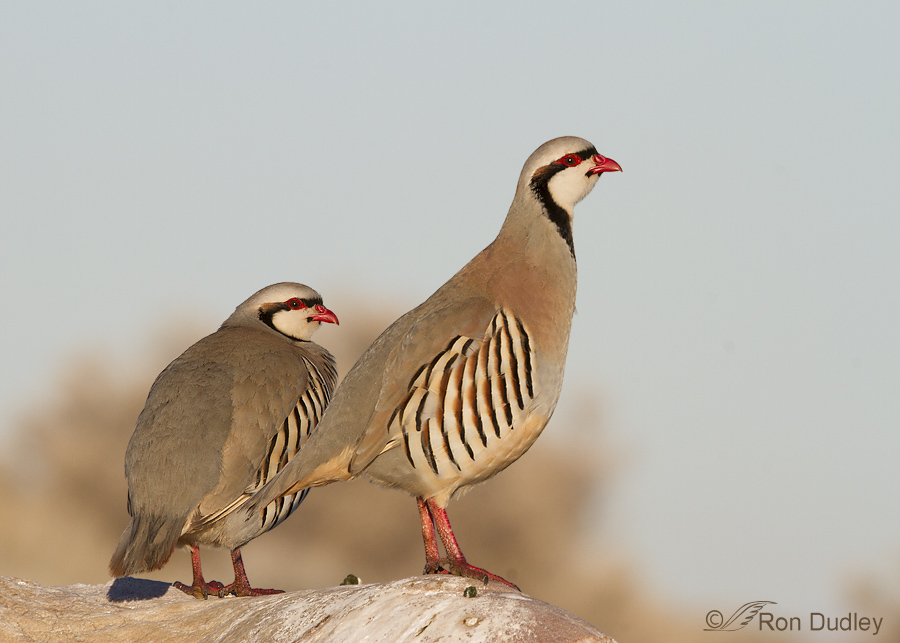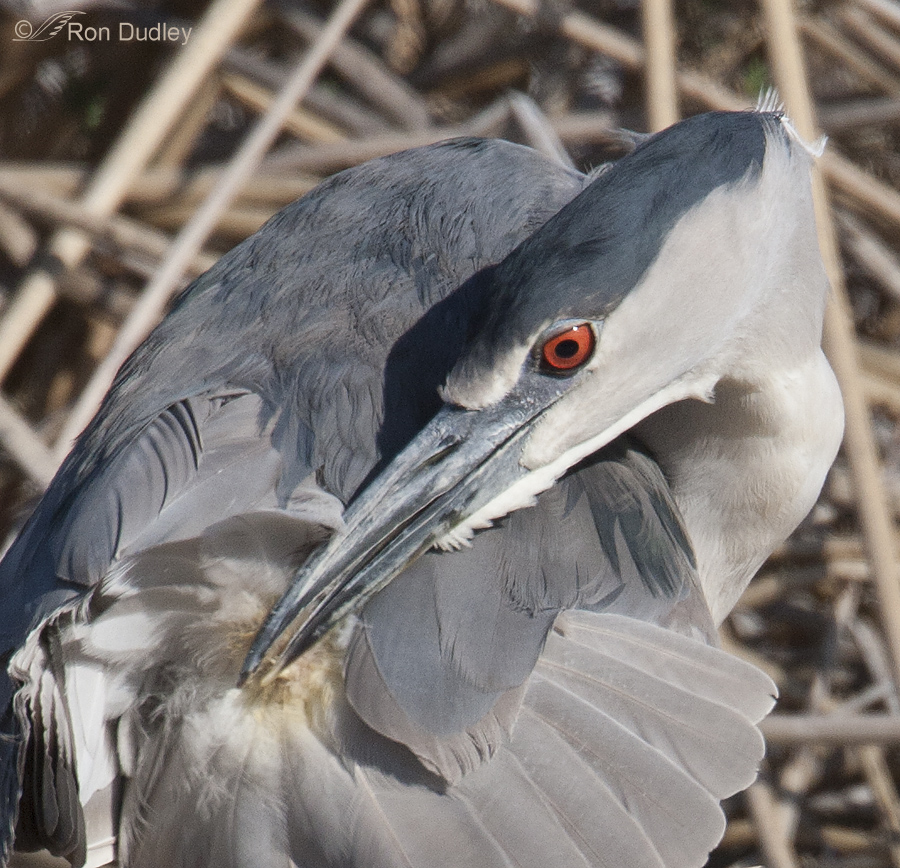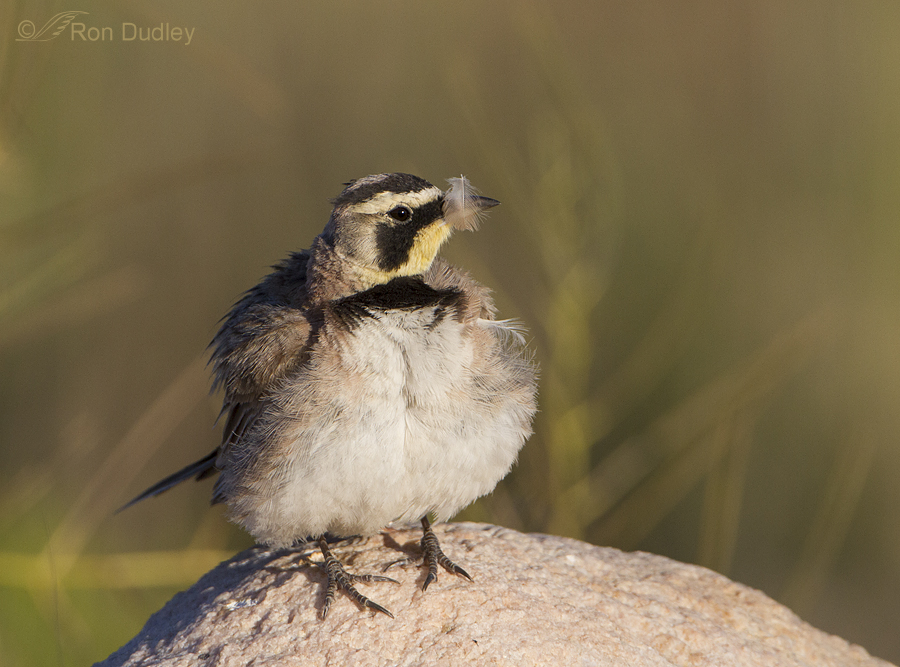Tag: preening
Western Meadowlark – Goofy Is As Goofy Does
Occasionally a bird gives me a somewhat wacky pose that I enjoy enough to post. This image is one of those.
Preening Trumpeter Swans
Western Meadowlark Posing In The Snow
Preening Trumpeter Swan On Montana’s Elk Lake
Juvenile Magpie With Feathers Blowing Away In The Breeze
Earlier this month as I was watching this juvenile (relatively short tail) Black-billed Magpie through my lens on Antelope Island I didn’t expect anything interesting to happen except for a possible take-off shot.
Sage Thrasher Posing For Me
Chukars – A Probable Mated Pair
Preening And The Uropygial (preen) Gland
Birds Befuddled By Stray Feathers
Mallard Reflection
“Reflecting” my need to work with an image with some color for a change (after all of the snow, brutal cold and gray skies we’ve been having) and also inspired by some recent discussion with blog reader Sue Johnson regarding reflections, I’ve chosen to post something this morning that’s a little different for me. Last July I found this wild female Mallard posing and preening on a perch I liked and in warm, early morning light. 1/320, f/6.3, ISO 500, 500 f/4, 1.4 tc, natural light As I gained experience as a photographer I found myself gravitating away from reflections, often preferring instead the fine detail typically available in traditional portraits. But for my tastes, this image provides both – good detail and a strong reflection. I like the setting, pose, perch, light and reflection. In fact I like the reflection (bird and water colors) at least as much as I do the live bird. The image may be a little tight for some but it’s very close to full frame, shot vertically, and I just didn’t have as much wiggle room as I would have liked. I thought I’d present the image for your consideration anyway… Ron
Bathing Willet Adult
Several weeks ago I found this adult Willet near the shore of a lake in Beaverhead County in sw Montana. Most of the shorebirds in this remote area of the state aren’t used to people so they’re difficult to approach but this single adult (and a couple of juveniles – likely the offspring of this bird) were very cooperative – which makes me speculate that this adult had migrated from an area where it had become accustomed to humans. 1/2000, f/7.1, ISO 400, 500 f/4 It spent quite a while feeding on aquatic insects and crustaceans. 1/2500, f/7.1, ISO 400, 500 f/4 There was a variable breeze blowing and in many of these shots and I liked the effect it had on the water surface. 1/2000, f/7.1, ISO 400, 500 f/4 Then the Willet began to bathe… 1/2000, f/7.1, ISO 400, 500 f/4 and occasionally would even give me direct eye contact. 1/2000, f/7.1, ISO 400, 500 f/4 As it completed its bath it did a few wing flaps to get rid of some of the water. 1/2500, f/7.1, ISO 400, 500 f/4 And then a vigorous shake to help dry and rearrange the feathers. 1/2500, f/7.1, ISO 400, 500 f/4 Then of course there was the post-bath preening. 1/2000, f/7.1, ISO 400, 500 f/4 And finally a nice wing stretch to complete the bathing ritual. The wing movement scared up some flying insects from the foreground vegetation. Willets appear to be pretty much “plain brown birds” until they…
Clumsy Prairie Falcon
This young Prairie Falcon had apparently been hunting ducks near the edge of the Great Salt Lake and got some of its belly feathers wet so it landed on a rock near the lake for some rest and preening. It posed for me for over 12 minutes which I appreciated but the light was low and variable due to the ever-changing thickness of the clouds. 1/800, f/6.3, ISO 500, 500 f/4, 1.4 tc At first the falcon was fairly wary of me because I was quite close. 1/800, f/6.3, ISO 500, 500 f/4, 1.4 tc But after a few minutes it settled into its preening again. 1/2000, f/5.6, ISO 640, 500 f/4 But this was a juvenile bird and not quite so suave and sure of its movements as an adult would be and suddenly it slipped on its perch and would have fallen backwards if it hadn’t caught itself with its wings and climbed back up on the rock. Even though I didn’t get much light in the eye I still got lucky on this shot. I’d been shooting this bird with my tc attached and at a relatively slow shutter speed and the falcon pretty much filled the frame. Just before I took this image I removed my tc and ratcheted up my ISO to get more shutter speed for a possible take-off shot. If I hadn’t done that the wings would likely have been soft from motion blur and I’d have cut off parts of the bird with the tc attached. …
Black-necked Stilt Stretching and Preening
The Black-necked Stilt is an elegant study in contrasts with its white breast and shiny black wings accentuated by extremely long, bright red legs. They’re often found feeding near American Avocets and I’ve routinely been able to get preening and stretching images of avocets but the stilts have been less cooperative with me. Typically they’ll actively feed when I’m near but they always seem to fly off to do their self-maintenance. 1/2000, f/6.3, ISO 400, 500 f/4, 1.4 tc However, this bird apparently decided that flying off was too much effort and it unexpectedly began a series of stretches. 1/2000, f/6.3, ISO 400, 500 f/4, 1.4 tc I was able to photograph a variety of interesting poses but by this time the sun was relatively high and so some of the best shots are missing light in the eye. Stilts often pull their leg up over the wing when scratching the head. 1/2500, f/6.3, ISO 400, 500 f/4, 1.4 tc Because these birds are usually wading in water when I’m photographing them the extreme length of their legs is not always evident but catch one in a pose like this and it becomes quite apparent. 1/3200, f/6.3, ISO 400, 500 f/4, 1.4 tc I like the water splash and pose in this shot. 1/2500, f/6.3, ISO 400, 500 f/4, 1.4 tc Here the stilt has finished stretching for the moment and is contemplating its next move… 1/2000, f/6.3, ISO 400, 500 f/4, 1.4 tc which turned…
Bathing Killdeer
Two days ago we woke up to a cloudy morning so we put our shooting plans on hold for the day but soon the clouds began to clear from the south so we decided at the last minute to head for Farmington Bay which is not only a shorter drive but it’s further south than Antelope Island, which gave us a better chance for some decent and relatively early light. I’m glad we did – if for no other reason than this cooperative Killdeer. 1/5000, f/5.6, ISO 500, 500 f/4, 1.4 tc The Killdeer was a little wary of us as we approached but as soon as I turned the engine off it settled right down for its morning bath. A note about shutter speed for these shots: When birds are bathin’ and shakin’ the feather movement is very fast and since I had plenty of light and wanted to freeze that movement I made the conscious decision to go for a minimum shutter speed of 1/3200. I think it worked out pretty well to stop the motion of both the feathers and the water spray. All images are in the sequence that they occurred. 1/4000, f/5.6, ISO 500, 500 f/4, 1.4 tc First the Killdeer seemed to be testing the water temperature before proceeding. 1/3200, f/7.1, ISO 500, 500 f/4, 1.4 tc Since the bath water seemed about right the bird began to bathe with gusto. 1/4000, f/7.1, ISO 500, 500 f/4, 1.4 tc For these first few shots the Killdeer…
Western Meadowlark – Goofy Is As Goofy Does
Occasionally a bird gives me a somewhat wacky pose that I enjoy enough to post. This image is one of those.
Preening Trumpeter Swans
Western Meadowlark Posing In The Snow
Preening Trumpeter Swan On Montana’s Elk Lake
Juvenile Magpie With Feathers Blowing Away In The Breeze
Earlier this month as I was watching this juvenile (relatively short tail) Black-billed Magpie through my lens on Antelope Island I didn’t expect anything interesting to happen except for a possible take-off shot.
Sage Thrasher Posing For Me
Chukars – A Probable Mated Pair
Preening And The Uropygial (preen) Gland
Birds Befuddled By Stray Feathers
Mallard Reflection
“Reflecting” my need to work with an image with some color for a change (after all of the snow, brutal cold and gray skies we’ve been having) and also inspired by some recent discussion with blog reader Sue Johnson regarding reflections, I’ve chosen to post something this morning that’s a little different for me. Last July I found this wild female Mallard posing and preening on a perch I liked and in warm, early morning light. 1/320, f/6.3, ISO 500, 500 f/4, 1.4 tc, natural light As I gained experience as a photographer I found myself gravitating away from reflections, often preferring instead the fine detail typically available in traditional portraits. But for my tastes, this image provides both – good detail and a strong reflection. I like the setting, pose, perch, light and reflection. In fact I like the reflection (bird and water colors) at least as much as I do the live bird. The image may be a little tight for some but it’s very close to full frame, shot vertically, and I just didn’t have as much wiggle room as I would have liked. I thought I’d present the image for your consideration anyway… Ron
Bathing Willet Adult
Several weeks ago I found this adult Willet near the shore of a lake in Beaverhead County in sw Montana. Most of the shorebirds in this remote area of the state aren’t used to people so they’re difficult to approach but this single adult (and a couple of juveniles – likely the offspring of this bird) were very cooperative – which makes me speculate that this adult had migrated from an area where it had become accustomed to humans. 1/2000, f/7.1, ISO 400, 500 f/4 It spent quite a while feeding on aquatic insects and crustaceans. 1/2500, f/7.1, ISO 400, 500 f/4 There was a variable breeze blowing and in many of these shots and I liked the effect it had on the water surface. 1/2000, f/7.1, ISO 400, 500 f/4 Then the Willet began to bathe… 1/2000, f/7.1, ISO 400, 500 f/4 and occasionally would even give me direct eye contact. 1/2000, f/7.1, ISO 400, 500 f/4 As it completed its bath it did a few wing flaps to get rid of some of the water. 1/2500, f/7.1, ISO 400, 500 f/4 And then a vigorous shake to help dry and rearrange the feathers. 1/2500, f/7.1, ISO 400, 500 f/4 Then of course there was the post-bath preening. 1/2000, f/7.1, ISO 400, 500 f/4 And finally a nice wing stretch to complete the bathing ritual. The wing movement scared up some flying insects from the foreground vegetation. Willets appear to be pretty much “plain brown birds” until they…
Clumsy Prairie Falcon
This young Prairie Falcon had apparently been hunting ducks near the edge of the Great Salt Lake and got some of its belly feathers wet so it landed on a rock near the lake for some rest and preening. It posed for me for over 12 minutes which I appreciated but the light was low and variable due to the ever-changing thickness of the clouds. 1/800, f/6.3, ISO 500, 500 f/4, 1.4 tc At first the falcon was fairly wary of me because I was quite close. 1/800, f/6.3, ISO 500, 500 f/4, 1.4 tc But after a few minutes it settled into its preening again. 1/2000, f/5.6, ISO 640, 500 f/4 But this was a juvenile bird and not quite so suave and sure of its movements as an adult would be and suddenly it slipped on its perch and would have fallen backwards if it hadn’t caught itself with its wings and climbed back up on the rock. Even though I didn’t get much light in the eye I still got lucky on this shot. I’d been shooting this bird with my tc attached and at a relatively slow shutter speed and the falcon pretty much filled the frame. Just before I took this image I removed my tc and ratcheted up my ISO to get more shutter speed for a possible take-off shot. If I hadn’t done that the wings would likely have been soft from motion blur and I’d have cut off parts of the bird with the tc attached. …
Black-necked Stilt Stretching and Preening
The Black-necked Stilt is an elegant study in contrasts with its white breast and shiny black wings accentuated by extremely long, bright red legs. They’re often found feeding near American Avocets and I’ve routinely been able to get preening and stretching images of avocets but the stilts have been less cooperative with me. Typically they’ll actively feed when I’m near but they always seem to fly off to do their self-maintenance. 1/2000, f/6.3, ISO 400, 500 f/4, 1.4 tc However, this bird apparently decided that flying off was too much effort and it unexpectedly began a series of stretches. 1/2000, f/6.3, ISO 400, 500 f/4, 1.4 tc I was able to photograph a variety of interesting poses but by this time the sun was relatively high and so some of the best shots are missing light in the eye. Stilts often pull their leg up over the wing when scratching the head. 1/2500, f/6.3, ISO 400, 500 f/4, 1.4 tc Because these birds are usually wading in water when I’m photographing them the extreme length of their legs is not always evident but catch one in a pose like this and it becomes quite apparent. 1/3200, f/6.3, ISO 400, 500 f/4, 1.4 tc I like the water splash and pose in this shot. 1/2500, f/6.3, ISO 400, 500 f/4, 1.4 tc Here the stilt has finished stretching for the moment and is contemplating its next move… 1/2000, f/6.3, ISO 400, 500 f/4, 1.4 tc which turned…
Bathing Killdeer
Two days ago we woke up to a cloudy morning so we put our shooting plans on hold for the day but soon the clouds began to clear from the south so we decided at the last minute to head for Farmington Bay which is not only a shorter drive but it’s further south than Antelope Island, which gave us a better chance for some decent and relatively early light. I’m glad we did – if for no other reason than this cooperative Killdeer. 1/5000, f/5.6, ISO 500, 500 f/4, 1.4 tc The Killdeer was a little wary of us as we approached but as soon as I turned the engine off it settled right down for its morning bath. A note about shutter speed for these shots: When birds are bathin’ and shakin’ the feather movement is very fast and since I had plenty of light and wanted to freeze that movement I made the conscious decision to go for a minimum shutter speed of 1/3200. I think it worked out pretty well to stop the motion of both the feathers and the water spray. All images are in the sequence that they occurred. 1/4000, f/5.6, ISO 500, 500 f/4, 1.4 tc First the Killdeer seemed to be testing the water temperature before proceeding. 1/3200, f/7.1, ISO 500, 500 f/4, 1.4 tc Since the bath water seemed about right the bird began to bathe with gusto. 1/4000, f/7.1, ISO 500, 500 f/4, 1.4 tc For these first few shots the Killdeer…


